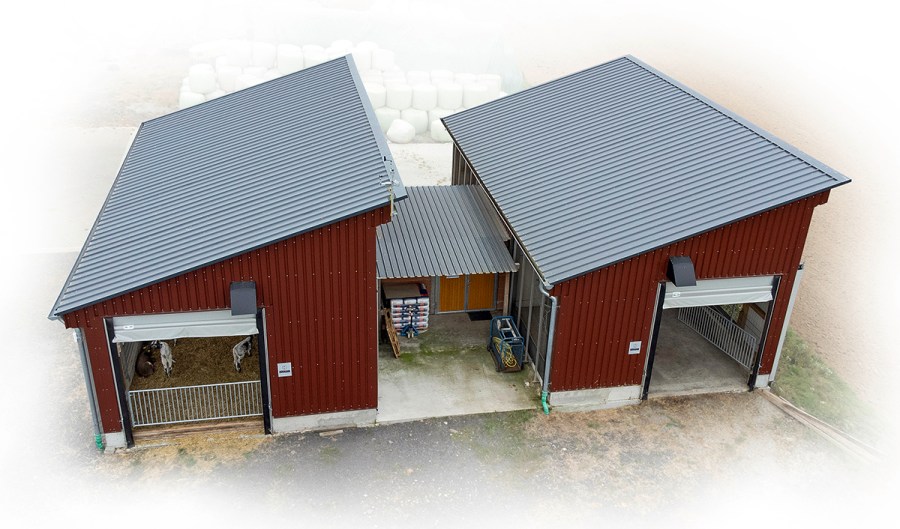Lisa and Johannes Köhler have invested in an intriguing new calf shed.
KEEPING IT BRIEF
- The Köhler family built an H-shaped calf barn with four pens that could each hold seven calves.
- Spatial separation has significantly improved the health of the animals.
- Today, the healthy calves achieve weight gains of 1.28kg/day.
- The 18.50m x 14.50m building is a €168,000 investment.
Together with her husband Johannes, Lisa Köhler runs a dairy farm with 150 milking cows yielding a herd average of 11,800 litres at 3.9% fat and 3.6% protein. Unlike with the cows, however, things have been less successful in the calf shed in recent years.
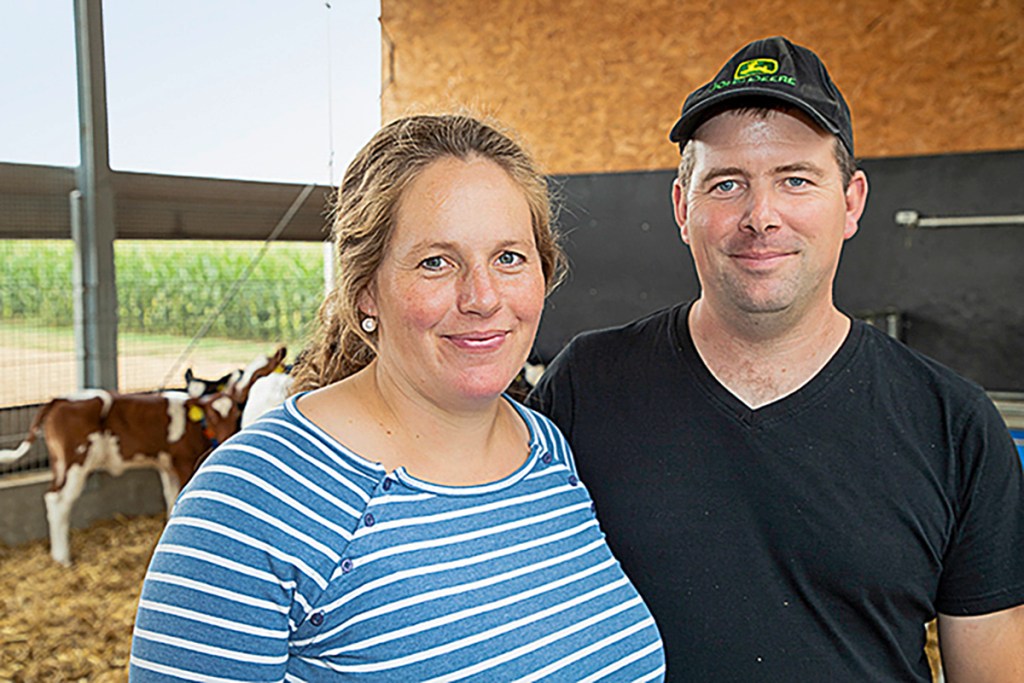
“In the old, temporarily converted pig barn, our calves were constantly sick. Nearly every animal needed antibiotics for lung problems or diarrhoea,” recalls the trained vet.
Making a change
The turning point came in 2021 when they attended a talk by American farmer Pete Kappelmann, who explained the importance of the in-out principle and the separation of the air space between older and younger calves. This message struck a chord with the Köhlers, who went all in and decided to build a new calf barn on a green field site. This building welcomed its first residents in February 2023.
Having the benefit of experience with the new building, the vet draws an extremely positive conclusion. Since the move, no animal has had to be treated for illness. The favourable impression is confirmed by a recent lung scan using a special ultrasound device, in which not a single calf showed signs of lung disease. And with an average weight gain of 1,283g/day from the 10th to the 100th day of life, overall performance results are also at a good level.
The couple have already reached their first important milestone. Based on the positive experiences of other farms with comparable calf sheds, they are now hoping for further positive effects. One of the things they are aiming for is longer-living cows with a big increase in the average lifetime milk yield from 35,000 to 50,000 litres per animal. That’s the goal.
H-stable with four groups
It’s the H-shaped layout of the new 18.50m x 14.50m build that makes it different to other traditional designs. In effect, there are two separate sheds, each with two pens separated by a dividing wall. The feed and supply room, including the automatic milk feeder, is located centrally between the two sheds.
The 14.50-long sides of the barns are fitted with wide-opening curtains to ensure there is a good supply of fresh air. The automatic system to open and close the curtains was not fully up and running when we visited in Sept 2024, so the Köhlers are currently manually operating the curtains.
According to Lisa Köhler, this system works very well. In addition to having plenty of fresh air, she is always concerned about a low concentration of ammonia in the barn’s air. In order to achieve her goals, she makes sure that the pens are always sufficiently bedded and that the calves can lie in their own nests.
In the colder winter months, the curtains are generally left shut, and the farm switches on the two fans installed on the north side of the barn. These allow them to control the amount of air flowing into the four areas using two long air sleeves.
Indeed, compartments are a much better description of the calf pens. Each of the four compartments measures 7.25 x 5.24 metres and has a usable resting area of 38m². With seven calves per group, each calf has around 5.5m² of space available — considerably more than the 1.5m² quoted in the Animal Welfare Farming Ordinance (TierSchNutztV) for two-week-old calves. This is complemented by an eaves height of 4.50 metres, so that all calves benefit from ample air space.
From A to B to C
This is how the new building falls into the calf rearing regime at the Köhler farm:
For the first 10 days, the calves remain on the main farm. The close proximity of the newborn calves to the freshly calved cows makes it much easier to provide the colostrum and acidified milk.
On day 10, and after a two-day transition to milk replacer, the calves move into the new building with its 28 places (4 x seven places). Here they are given milk replacer as well as ad-lib amounts of concentrate and roughage.
At four to six months old, the youngstock move across to a straw-bedded barn. The groups from the calf barn remain together but move to the next pen every month.
Starting at seven months, the group then moves to the youngstock shed, equipped with cubicles and rubber mats. Initially these animals remain in the same group in a separate pen to minimise the stress from being moved. Only after being in this pen for a month, do they then start to socialise with the more mature young stock.
With several calf groups now having moved through the new building, one thing Lisa Köhler has noticed is the increased appetite of the energetic calves
“During the ad-lib phase, each calf drinks an average of 18 litres a day. By the time they’re weaned, each calf will have consumed up to about 100kg of milk powder, which equates to a total feed cost of about €300,” calculates Lisa Köhler.
Based on the experience of other farms with a similar strategy, the veterinarian considers the extra feed expenditure a good investment in the future performance of her cows. This allows the replacement heifers to be inseminated much earlier, so they calve at 24 months or younger. This helps to offset that initial higher feed cost.
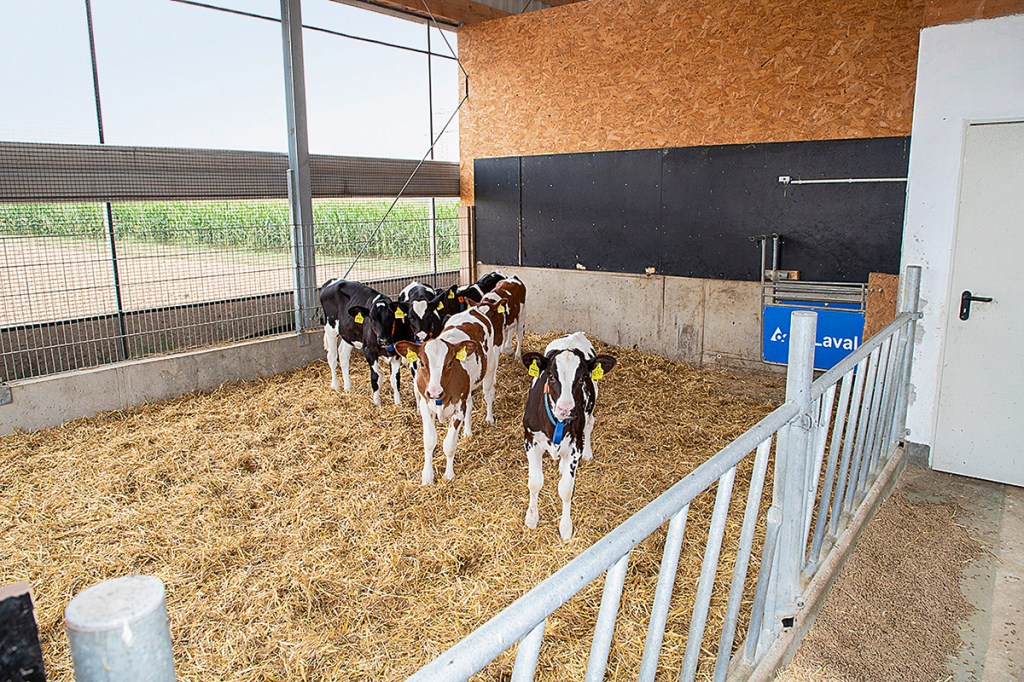
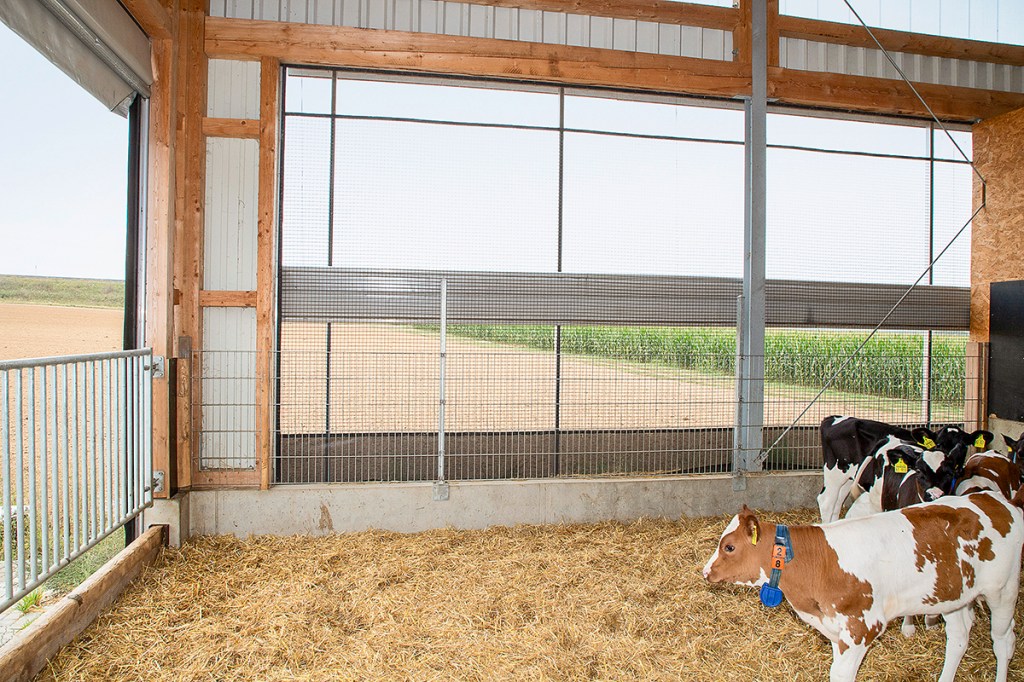
Consistent hygiene
The partitioning of the new building has another positive when it comes to hygiene. Each of the four compartments can be accessed through a roller door so they can be mucked out separately all year round. However, Johannes Köhler says one of the main things he would change is to make the doorways wider so the shed can be more easily cleaned out with the yard loader.


After each muck out, the pens are always cleaned and disinfected with a pressure washer. As another precautionary step, the pens/compartments remain empty for a few days after each cleaning. “This empty period is important to reduce the bacterial load,” emphasises the vet.
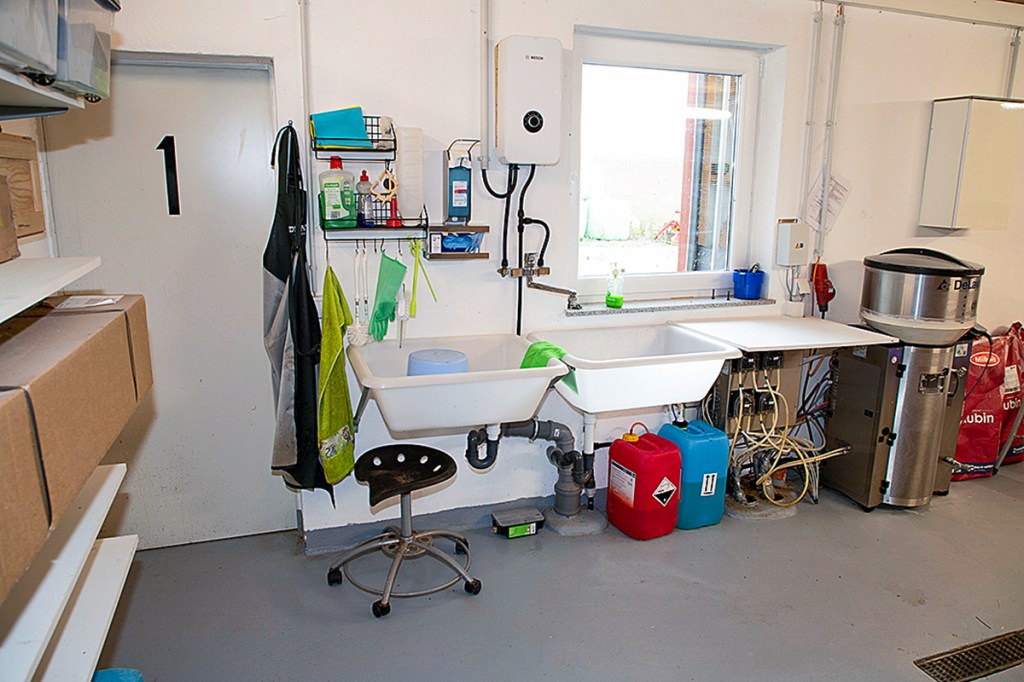
Pros and cons
Both Lisa and Johannes describe the supply area between the H-elements as a benefit. Because the dry, frost-free space is dry all year round, it can be used to store not just feed but also other equipment for rearing calves.
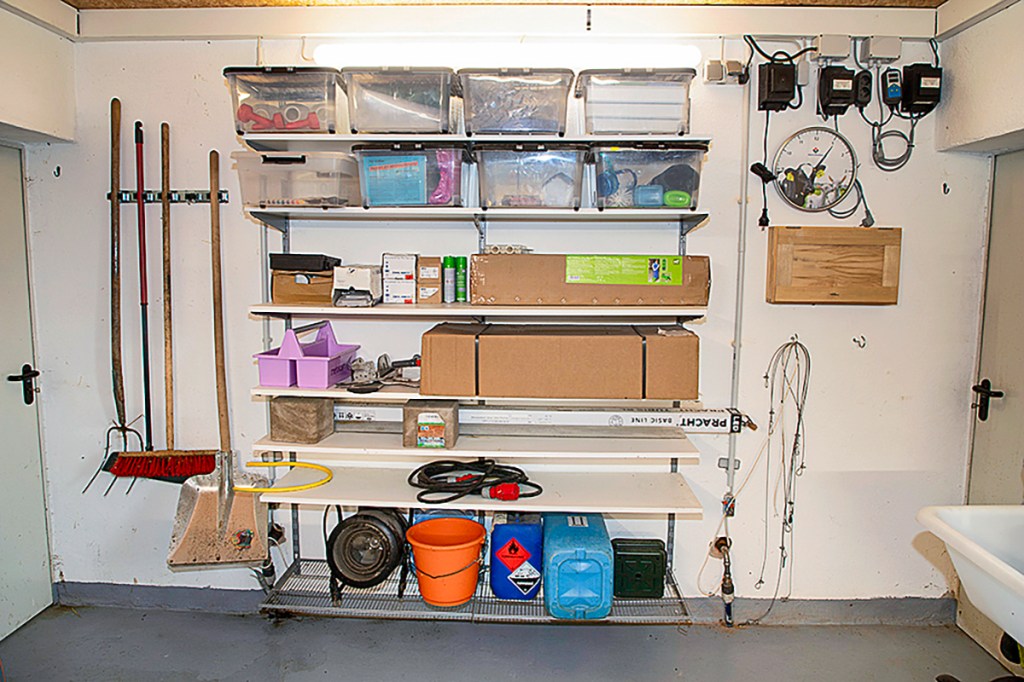
The milk powder feeder is also centrally located in the feed room. Although the DeLaval machine is capable of supplying the four feeders in four age groups, Lisa Köhler would opt for two machines in future. Her reasoning sounds as simple as it is logical.
“With two machines, the milk pipes are shorter so that the milk reaches the calf at a higher temperature,” she explains.
“Furthermore, despite the regular, automatic cleaning of the milk lines, from a hygiene point of view there is no way around regular replacement of the milk lines.”
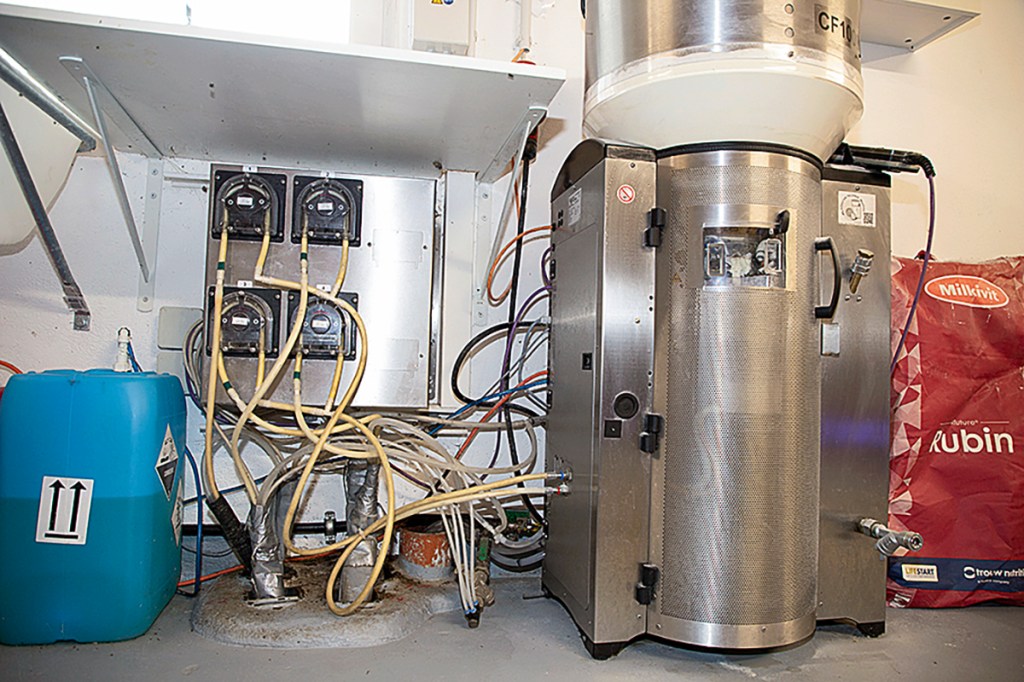
Placing the pipe underground also makes this replacement operation a more difficult task. With the benefit of hindsight, the milk pipes would be routed above ground. Not only would this make replacement more straightforward, but there would also be a better opportunity to insulate them to help against excessive heat loss or rapid cooling of the milk.
€6,000 per space
Most of the plumbing, concrete and masonry work was largely carried out by themselves. The wooden structure, including the roller doors and ventilation curtains, was done by Hörmann. If you include the equipment for the feed room and the calf feeder, the final bill totted up to €168,000 or about £148k. Divided by 28 calves, it cost around €6,000 (£5,285) per animal space.
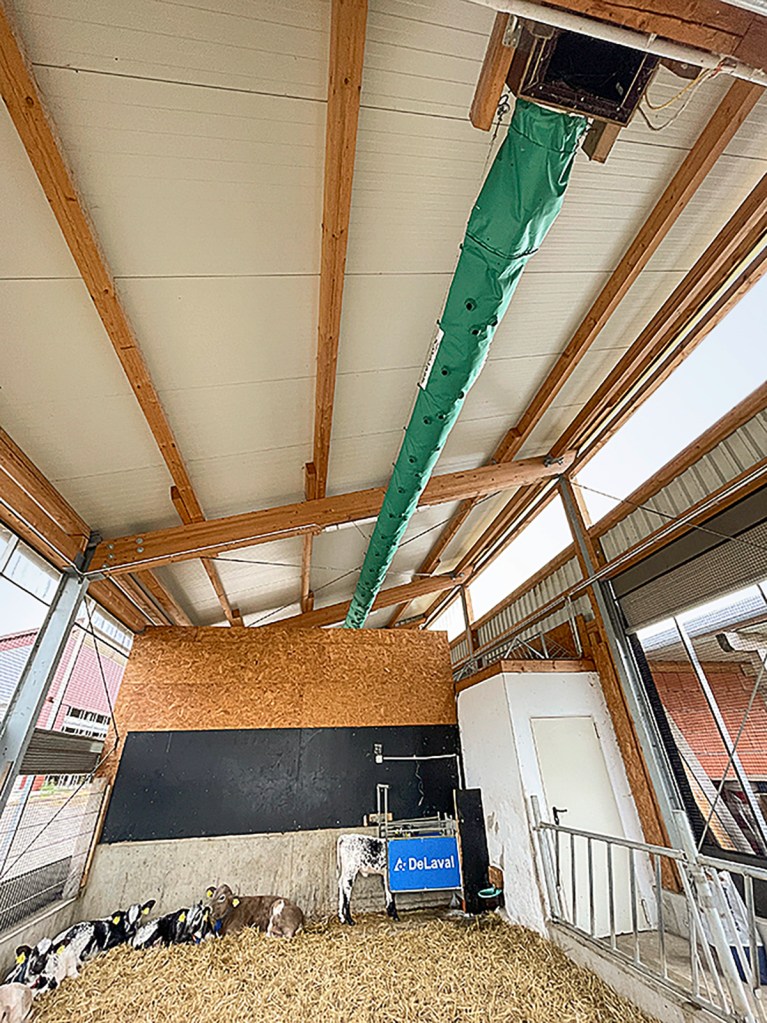
Summary
The Köhler family’s new H-shaped barn demonstrates how targeted investment in animal health can pay dividends. The well- thought-out spatial concept with consistent separation of age groups and air spaces prevents cross-infection between the four groups and even the individual animals.
The fact that the animals arrive healthy at the newly built barn is also down to Lisa Köhler’s consistent calf management. By her own admission, the early administration of colostrum and the feeding of acidified milk are just two of the very many small building blocks that ultimately lead to success.
Martin Zäh
For more up-to-date farming news click here and subscribe now to profi and save.

